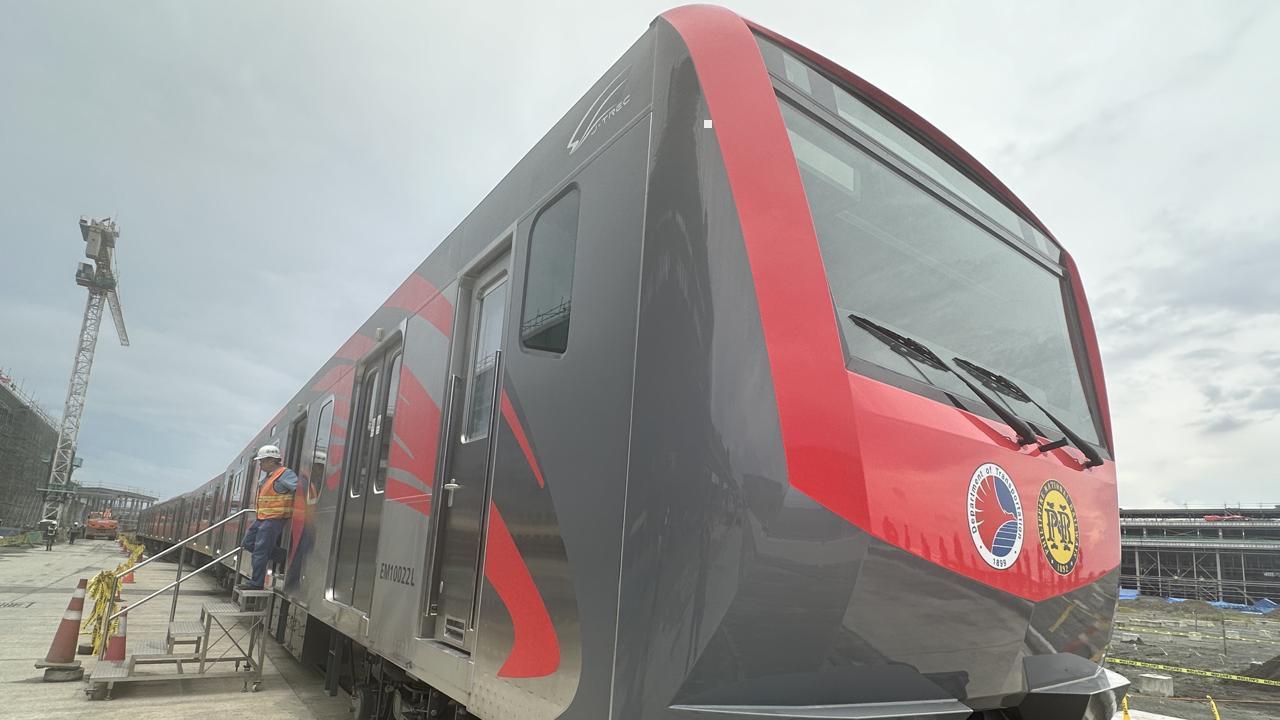
Post by : Amit
Photo : X / Joseph Morong
Major milestone for the country’s largest rail project
The Philippines has taken a decisive step toward modernizing its urban rail infrastructure with the approval of an operating concession plan for the highly anticipated North–South Commuter Railway (NSCR). This decision marks a critical point in the multi-phase project that will connect the rapidly growing northern provinces and southern regions to Metro Manila, creating a faster, cleaner, and more reliable commuter service.
The NSCR, once completed, will span over 147 kilometers, linking Clark International Airport in Pampanga to Calamba in Laguna. This north-to-south axis will cut through the heart of Luzon, one of Southeast Asia’s most densely populated corridors, carrying hundreds of thousands of passengers daily.
A concession designed for efficiency and performance
Under the newly approved plan, the project will be run under a public–private partnership (PPP) concession model. This structure will bring in a private operator responsible for running, maintaining, and managing the system for a defined period, while the Philippine government retains ownership of the assets.
The concession model is intended to ensure that the NSCR operates to global standards, benefiting from private-sector expertise in customer service, maintenance practices, and technology integration. Officials say this approach will also allow for performance-based incentives, ensuring that the operator maintains high service quality, punctuality, and safety.
A game-changer for daily commuters
For millions of Filipinos, particularly those who endure the daily traffic grind in and out of Metro Manila, the NSCR promises a dramatic improvement in commuting experience. Travel time between Clark International Airport and Calamba is expected to be cut to under two hours—less than half of the current journey by road.
The railway will also integrate with other transport systems, including the Metro Manila subway and the Light Rail Transit network, enabling smooth transfers between services. Such integration is crucial for creating a true mass-transit backbone that can reduce the city’s dependence on private vehicles and road-based public transport.
Economic ripple effects across Luzon
Beyond its role in easing commutes, the NSCR is projected to deliver major economic benefits. By improving regional connectivity, the railway will open up new residential and commercial development zones in provinces like Bulacan, Pampanga, and Laguna.
According to transport economists, the project will likely boost property values, attract businesses to suburban areas, and stimulate tourism in less-developed regions. The railway could also act as a catalyst for creating satellite cities, reducing pressure on Metro Manila’s overcrowded core.
Technology and sustainability at the core
The NSCR will feature modern, electric multiple-unit (EMU) trains capable of running at speeds up to 160 km/h. These trains will be equipped with advanced braking systems, real-time passenger information displays, and improved seating layouts for comfort.
In addition to high-speed capability, the NSCR will prioritize environmental performance. The fully electrified system will help cut greenhouse gas emissions compared to diesel-powered alternatives, aligning with the Philippines’ climate commitments.
Learning from global models
Transport planners have studied similar rail concessions in Japan, Singapore, and Europe to design a framework suited for the Philippine context. The concession agreement is expected to set strict performance targets for safety, cleanliness, and on-time performance, with penalties for non-compliance and incentives for exceeding targets.
This model, officials say, will ensure the railway remains financially viable while also meeting public service obligations.
Strong international backing
The NSCR is funded through a combination of loans and grants from the Japan International Cooperation Agency (JICA) and the Asian Development Bank (ADB). Both institutions have stressed the importance of a sustainable operations model to ensure the system delivers value for decades.
Japanese companies are heavily involved in the project, from rolling stock supply to station design and signaling systems, reflecting Japan’s long-standing role in Philippine transport infrastructure development.
Managing challenges ahead
While the approval of the concession plan is a significant achievement, several hurdles remain before the NSCR can begin full operations. Construction is ongoing across multiple segments, and land acquisition in densely populated areas continues to be a sensitive issue.
Moreover, ensuring that the concessionaire can operate in a way that balances profitability with affordability for passengers will be a constant challenge. Fare-setting mechanisms, government subsidies, and passenger demand forecasting will play a crucial role in keeping the railway accessible.
Public expectations and political commitment
Public interest in the NSCR has been high, with many viewing it as a litmus test for the Philippines’ ability to deliver world-class mass transit systems. President Ferdinand Marcos Jr.’s administration has repeatedly emphasized the railway’s role in the country’s economic blueprint, and the Department of Transportation has pledged to maintain momentum through the project’s construction and eventual commissioning.
By framing the railway as both a transport and nation-building initiative, officials are aiming to rally public and political support to see it through, despite potential delays or cost adjustments.
Transforming the commuter landscape
If executed successfully, the NSCR could be one of the most transformative transport projects in Philippine history. By providing fast, reliable, and sustainable rail service, the line will not only ease daily commutes but also reshape urban growth patterns, strengthen regional economies, and set new benchmarks for public–private cooperation in infrastructure.
As construction cranes and tunnel boring machines continue their work, the concession plan approval signals that the operational vision for the NSCR is coming into focus. The next few years will be critical in ensuring that this vision is realized—bringing the long-promised benefits of modern rail travel to millions of Filipinos.
Philippines, North–South Rail Concession










Bengaluru-Mumbai Superfast Train Approved After 30-Year Wait
Railways approves new superfast train connecting Bengaluru and Mumbai, ending a 30-year demand, easi

Canada Post Workers Strike Halts Nationwide Mail and Parcel Services
Canada Post halts operations as CUPW strike disrupts mail and parcel delivery nationwide amid disput

PM Modi Launches BSNL ‘Swadeshi’ 4G Network, 97,500 Towers Built
India enters global telecom league as PM Modi inaugurates BSNL’s indigenous 4G, connecting 26,700 vi

India’s Iconic MiG‑21 Takes Final Flight After Six Decades of Service
After 60 years India retires its MiG‑21 fighter jet, a legendary yet controversial warplane marking

Hindustan Zinc unveils AI hotspot monitoring at Debari smelter
Hindustan Zinc launches AI-powered Switchyard Hotspot Monitoring at Debari smelter to cut outages bo

Chinese experts worked inside sanctioned Russian drone plant
Chinese drone specialists visited IEMZ Kupol supplying parts and drones via intermediaries, deepenin